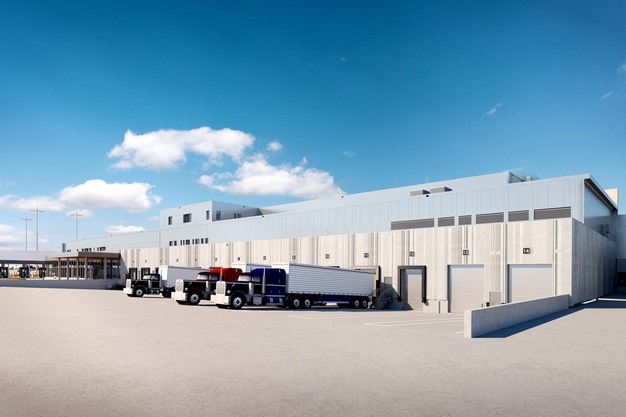For moving produce, the details sound intriguing: a new 2.5-kilometer, six-lane bridge connecting the U.S. and Canada that will become one of the largest land border ports and the newest international crossing in North America between the U.S. and Canada. Not to mention the fact that the structure will have 14 commercial inspection bays at the Canadian Port of Entry and 28 at the U.S. Port of Entry.
"One reason why governments moved ahead on this project is to increase the efficient and effective movement of people and goods, specifically through Windsor-Detroit," says Heather Grondin, Chief Relations Officer for Windsor-Detroit Bridge Authority, the Crown corporation responsible for the delivery of the Gordie Howe International Bridge project, a structure that's named after beloved Canadian and long-time Detroit Red Wings hockey player. "Why that's so important is because 25 percent of our binational trade between Canada and the U.S. crosses at Windsor-Detroit. Ensuring that trade can move efficiently and effectively helps our shippers and companies on both sides of the border."
 A rendering of the bridge. Photos: Gordie Howe International Bridge project.
A rendering of the bridge. Photos: Gordie Howe International Bridge project.
That includes the goal of offering shippers trip time predictability and repeatability – something produce shippers moving perishable loads particularly rely so much on. While it's undetermined to date what percentage of goods produce will account for crossing the bridge, its location might appeal to a particular set of growers on the Canadian side of the bridge. "We're 45 minutes away from Leamington-Kingsville which has the highest concentration of greenhouses in North America and their annual production is around 500 million kilograms of produce," says Grondin. "A huge percentage of that does cross the border and we will be the most convenient border crossing for them. So we have a direct pipeline into that highly concentrated greenhouse community."
Adding to the region's capacity
The bridge, which is set to be open in fall 2025 and is made up of three lanes heading into the U.S. and three into Canada, is being built a few kilometers south of the existing bridge in the region, the four-lane Ambassador Bridge. With the Ambassador containing passenger and commercial traffic, and also the two-lane Windsor-Detroit Tunnel which is largely passenger traffic, the goal will be to balance out how traffic moves through the region. "The purpose of the Gordie Howe Bridge is to not take away from any other crossings but to enhance the entire region and to provide the smooth movement of current traffic capacity but also the capacity of the future," says Grondin. "It will provide an opportunity for that capacity to grow because there is an opportunity for more goods to move across."
In the 24 years in the making, the U.S. Customs and Border Protection, the Canadian Border Services Agency, and other agencies have been involved along the way, and their input is factored into the design of the port of entry – everything from what the buildings look like, the features within the buildings, and more. "Those all come out of direct engagement with the people who manage the border inspection function. They've pulled from their lessons learned from across all the ports of entry that they manage and applied that to the design specifications that we built here," she says. This includes things like the separation of the commercial and passenger vehicles throughout the entire corridor, the inclusion of more storage space, warehouse parking spaces, the number of warehouse and truck bays, and more.
 The Canadian Port of Entry will feature 14 commercial inspection bays.
The Canadian Port of Entry will feature 14 commercial inspection bays.
So how is the produce community feeling about this endeavor? With 24 years in planning and making, the fresh produce industry is intrigued and is particularly interested in trip time predictability and repeatability factors. The bridge, for which the toll rates have yet to be determined, will also have the Canadian Food Inspection Agency at the Canadian port, and at the U.S. port, it will have the Department of Agriculture and U.S. Food and Drug Administration stationed there. "So any secondary inspection will be able to be done on-site and that allows for that efficient movement," says Grondin.
 For more information:
For more information:
Gordie Howe International Bridge
Tel: +1 (844) 322-1773
[email protected]
https://www.gordiehoweinternationalbridge.com
